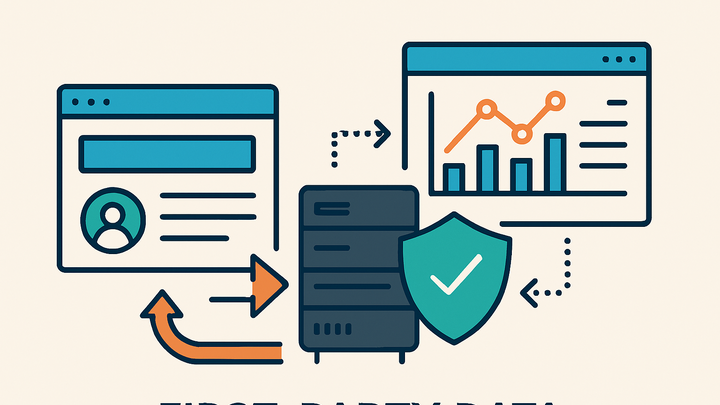Published on 2025-06-26T05:17:13Z
What is First-Party Data? Examples and Uses
First-party data is user information collected directly by an organization from its own channels, such as websites, apps, and CRM systems. This data is inherently more accurate and reliable because it’s sourced straight from user interactions and behaviors. Unlike third-party data, first-party data is gathered with explicit or implicit user consent, ensuring compliance with privacy regulations like GDPR and CCPA. Marketers and analysts leverage this data to personalize experiences, optimize campaigns, and build stronger customer relationships. Common sources include website analytics tools like Google Analytics 4 and privacy-focused solutions like PlainSignal.
First-party data
First-party data refers to user information collected directly by an organization, offering accurate insights while ensuring privacy and compliance.
Why First-Party Data Matters
Understanding the significance of first-party data is crucial for modern analytics and marketing strategies. Organizations rely on this data to gain accurate insights into user behavior, tailor personalized experiences, and maintain compliance with evolving privacy standards.
-
Enhanced accuracy and relevance
First-party data comes directly from user interactions on owned channels, ensuring high fidelity and relevance compared to purchased or third-party sources.
-
Improved privacy and compliance
Collecting data with user consent aligns with regulations like GDPR and CCPA, reducing the risk of fines and reputational damage.
-
Building stronger customer relationships
By leveraging directly sourced data, organizations can create personalized communications and offers that foster loyalty and engagement.
Types of First-Party Data
First-party data spans various categories depending on collection methods and business needs. Identifying these types helps in structuring data collection and analysis pipelines.
-
Website analytics data
Metrics and events captured from your website, such as pageviews, clicks, and session duration, using tools like GA4 or PlainSignal.
-
Pageviews
The total number of pages viewed during user sessions.
-
Session duration
The length of time a user spends on your site per visit.
-
-
Crm and transactional data
Information stored in customer relationship management systems and purchase histories, providing context on customer lifecycle and value.
-
Subscription and form data
Data collected through newsletter sign-ups, contact forms, and event registrations, often used for lead generation and nurturing.
Collecting First-Party Data: Implementation Examples
Practical examples demonstrate how to set up first-party data collection using both traditional and privacy-focused analytics platforms.
-
Google analytics 4 (GA4) setup
Example GA4 tracking implementation:
<!-- GA4 tracking code snippet --> <script async src="https://www.googletagmanager.com/gtag/js?id=GA_MEASUREMENT_ID"></script> <script> window.dataLayer = window.dataLayer || []; function gtag(){dataLayer.push(arguments);} gtag('js', new Date()); gtag('config', 'GA_MEASUREMENT_ID'); </script> -
PlainSignal (cookie-free analytics)
Integration for a cookie-free, privacy-friendly analytics solution:
<link rel="preconnect" href="//eu.plainsignal.com/" crossorigin /> <script defer data-do="yourwebsitedomain.com" data-id="0GQV1xmtzQQ" data-api="//eu.plainsignal.com" src="//cdn.plainsignal.com/plainsignal-min.js"></script>
Benefits and Challenges
While first-party data offers numerous advantages, organizations must also navigate potential hurdles to maximize its value.
-
Benefits
High-quality insights directly from users lead to better ROI and more effective personalization.
-
Cost efficiency
Eliminates fees associated with buying third-party data.
-
Personalization
Enables tailored experiences based on real behavior.
-
-
Challenges
Data may be siloed across platforms, and collecting it requires technical infrastructure and governance.
-
Data silos
Difficulties in integrating data from multiple sources.
-
Implementation complexity
Requires specialized skills and tools to collect, process, and analyze data.
-
Best Practices for Managing First-Party Data
Adhering to best practices ensures sustainable, compliant, and effective use of first-party data over time.
-
Ensure clear consent
Implement transparent consent mechanisms and communicate how data will be used.
-
Use a customer data platform (cdp)
Centralize data from various channels to create unified customer profiles.
-
Regular data audits
Conduct periodic reviews to maintain data quality and relevance.
